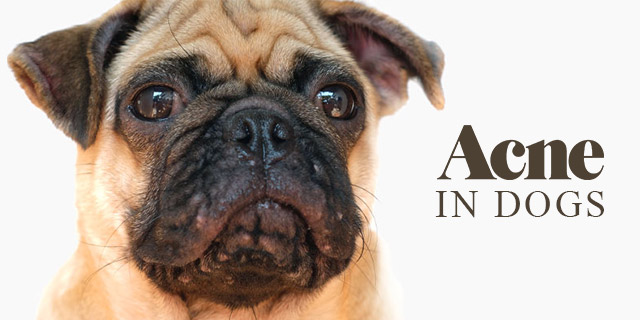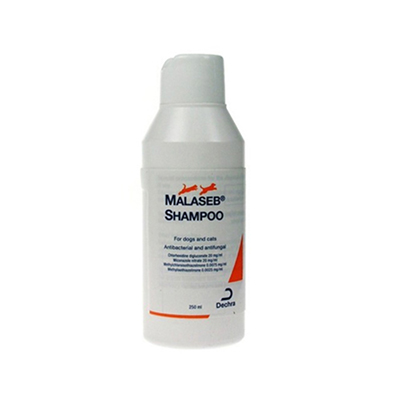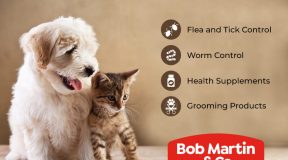 It takes a lot for a flower to bloom from seed. Similar is the case with humans as well as animals. Several changes occur in the body with each growing stage of life. When we reach a teenager stage, generally the first issue that we come across is acne and strive to try everything to be acne free. Just like us, adolescent dogs also go through certain challenging physical and behavioral changes. They tend to get acne as teenagers but the sole difference is, they aren’t self-conscious about it the way we are. As a pet parent, it is crucial for you to know what exactly acne in dogs is.
It takes a lot for a flower to bloom from seed. Similar is the case with humans as well as animals. Several changes occur in the body with each growing stage of life. When we reach a teenager stage, generally the first issue that we come across is acne and strive to try everything to be acne free. Just like us, adolescent dogs also go through certain challenging physical and behavioral changes. They tend to get acne as teenagers but the sole difference is, they aren’t self-conscious about it the way we are. As a pet parent, it is crucial for you to know what exactly acne in dogs is.
What is Acne in Dogs
Acne in dogs is generally observed when your pooch is five to eight months old. During adolescence, the oil glands of a dog’s body become super-active. As a result, he may produce too much of an oily liquid called sebum. Depending on the dog and their living environment, they may go through some breakouts despite your immense care. Other reasons that instigate acne are an allergic reaction to a product or food, their hormonal changes, poor hygiene or bacteria. The deadly combination of excess oil with dirt and dander plugs-up the hair follicles that causes multiple comedones (blackheads), scabs or red bumps on the chin muzzle, lips, chest or genital area of the dog.
The technical terminology for dog acne is folliculitis and furunculosis. Acne is generally not a major health issue for dogs as it gets cleared up automatically once they reach adulthood. But, if left unidentified and untreated, acne can result in a serious medical issue.
There are various other possible causes for dog’s acne and here’s a list of the following.
Causes of Dog Acne
- Trauma
- Genetics
- Hormones
- Contact dermatitis
- Autoimmune diseases
- Fleas
- Allergies
- Breed predisposition
- Secondary bacterial infection
Symptoms of Acne in Dogs
It is vital for pet parents to be aware of the symptoms of dog acne in order to recognize them if any are visible on their pet. Below is a rundown of most common symptoms for this condition.
- Hairless papules
- Blackheads
- Redness
- Nodules
- Bleeding
- Swelling
- Itching
Moreover, if acne is left untreated, its later symptoms can be irksome and painful to the dog. The later symptoms can include:
- Large papules
- Ulcerated lesions with or without discharge
- Extreme redness and irritation
- Bleeding
- Pain
- Scarring
Types of Dog Acne
Superficial acne
Superficial acne develops on the surface of the dog’s skin. They are just the normal pimples or bumps that occur on pet’s chin, muzzle or lips.
Juvenile acne
Dogs develop juvenile acne around their sixth month or so until the pup is old enough to progress into adulthood.
Nasal acne
Nasal acne is caused by trauma to the area of the nose. If your dog likes to dig in the dirt and otherwise sniff around, then you might notice him do the same thing bit aggressively. The dirt will impact his skin and hence, there will be the development of a pimple or two.
Hyperkeratosis
Hyperkeratosis in dogs is caused by your dog producing too much keratin that leads to thickening of the skin which looks just like a pimple.
Interdigital acne
Interdigital acne is formally caused by furunculosis. The condition is characterized by the reoccurrence of boils that can develop between your dog’s paws. It may be caused by bristly hair follicles being forced into the skin when the dog walks.
How to Treat Acne in Dogs
Pay Attention to your Dog’s Hygiene
Most acne problems in dogs are caused due to poor hygiene and bacteria. Therefore, pet parents need to keep their pup clean by regular bathing them once a week, taking care of their dental hygiene and paying attention to their overall well-being. You need to take into account any type of new food or product newly introduced to your pooch to see whether they cause any problems.
Use Medicated Shampoo
You can visit a local pet care store to find medicated or antibacterial shampoo specially designed for dogs. Moreover, you can also buy Malaseb Shampoo, MalAcetic Shampoo and MalAcetic conditioner for your dog from CanadaVetExpress.
Buy Malaseb Shampoo at Lowest Price | Free Shipping!
Don’t Be Picky with Pimples
It may be tempting to pick the acne but it’s clearly not a good idea as it can worsen the problem. Picking the bumps or pimples can actually cause the acne to spread or even cause a more serious infection. So, do not even touch your pooch’s pimple because sometimes it is good to let nature play its role and let acne clear up on its own. But, to ease the skin itching and irritation caused due to acne, you can use Apoquel for dogs. It is a highly effective anti-allergic treatment that removes itching within 24 hours.
Visit your Vet
Visit your veterinarian immediately if your dog’s acne seems to be getting worse or if the area appears to be infected. Consult the vet for professional advice and treatment options.
You may also like to know Tips for Grooming Your Dog at Home.







